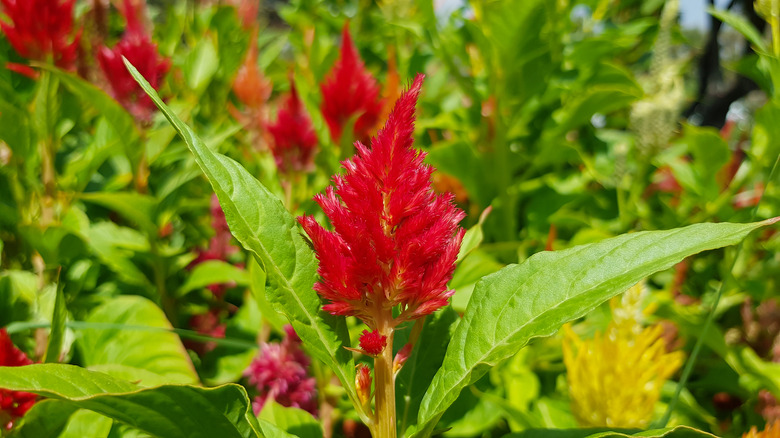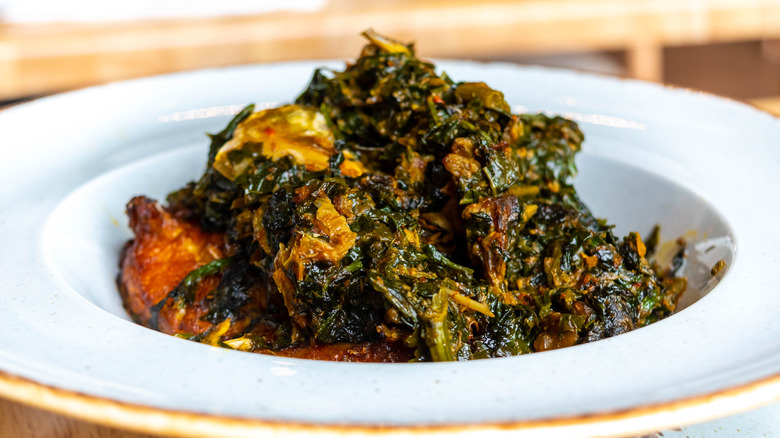Cockscomb: The Colorful Green You Should Know More About
Picture a verdant, leafy plant over three feet tall, supporting vibrant yellow, scarlet, or purple blossoms at its tip in a wide array of flower shapes, including fiery and dynamic flame-like flowers, blooms like the bright red comb atop a rooster's head, and even some that resemble closed brain corals. If you're still with us, you have just visualized a cockscomb, or Celosia cristata (via Britannica). Known in some places as a weed, other plant cultivars grow it for its aesthetic appeal, and it's even thought to be emerging in the culinary world (via Food & Wine).
While cockscomb is known for its strikingly bright and whimsical flowers, it also offers us more palatable delights, such as seeds rich in consumable oil and tender leafy greens similar to spinach in flavor (via Plants for a Future). The texture of young cockscomb leaves has been likened to basil, though Click and Grow recommends picking the leaves while the plant is young and before it has flowered–otherwise, the leaves may become tough and bitter.
According to Food & Wine, cockscomb is a West African green. But Click and Grow says the plant can also be found in Indonesia and India.
How to cook with cockscomb
Offering a hearty dose of iron, protein, and essential nutrients like vitamins A, C, and antioxidants, cockscomb is as nutritious as it is tasty, versatile, and lovely to behold. Celosia's health benefits rival spinach (via Echo Community), perhaps one reason why so many cultures have embraced this resilient-yet-delicate plant. Because of this, it has many other names, including Nigerian spinach, Lagos spinach, quail grass, feather celosia, red spinach, woolflower, fairy fountain, and others (via North Carolina Extension Gardener).
Essentially, though, home cooks can use it anywhere they would use the ever-familiar spinach — whether eaten fresh in a salad form, stewed to perfection in the Nigerian classic efo riro (via Black Foodie), stuffed in a quiche or frittata, steamed, wilted, or blended into a smoothie – the possibilities are practically endless. SF Gate recommends boiling or steaming the greens briefly before dousing them in bright citrus or chili oil–emphasis on the "briefly." And if you're looking for even more ways to enjoy this nutrient-packed descendant of amaranth, you're in luck — cockscomb can make a welcome addition to many traditional spinach-based dishes, such as spanakopita, creamed Lagos spinach, artichoke dip, and more.

